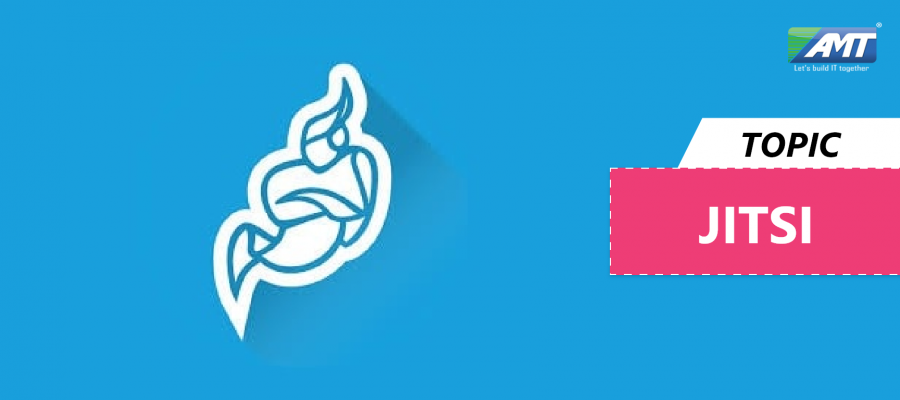Jitsi is a collection of free and opensource multiplatform voice (VoIP), videoconferencing and instant messaging applications for the web platform, Windows, Linux, macOS, iOS and Android. The Jitsi project began with the Jitsi Desktop (previously known as SIP Communicator). With the growth of WebRTC, the project team focus shifted to the Jitsi Video Bridge for allowing web-based multi-party video calling. Later the team added Jitsi Meet, a full video conferencing application that includes web, Android, and iOS clients. Jitsi also operates meet.jit.si, a version of Jitsi Meet hosted by Jitsi for free community use. Other projects include: Jigasi, lib-jitsi-meet, Jidesha, and Jitsi.
Jitsi has received support from various institutions such as the NLnet Foundation, the University of Strasbourg and the Region of Alsace and it has also had multiple participations in the Google Summer of Code program.
The Jitsi open source repository on GitHub currently contains 103 repositories. The major projects include:
- Jitsi Meet
- Video conferencing server designed for quick installation on Debian/Ubuntu servers.
- Jitsi Videobridge
- WebRTC Selective Forwarding Unit engine for powering multi-party conferences.
- Jigasi
- Server-side application that links allows regular SIP clients to join Jitsi Meet conferences hosted by Jitsi Videobridge.
- lib-jitsi-meet
- Low-level JavaScript API for providing a customized UI for Jitsi Meet.
- Jidesha
- Chrome extension for Jitsi Meet.
- Jitsi
- Audio, video, and chat communicator that supports protocols such as SIP, XMPP/Jabber, AIM/ICQ, and IRC.
- Jitsi Meet:
It is an open source JavaScript WebRTC application and can be used for videoconferencing. One can share desktop and presentations and with just a link can invite new members for videoconference. It can be used by downloading the app or directly in a browser and it is compatible with any recent browser. Every user can use Jitsi.org servers or can download and install the server software on a Linux-based machine.
Key Features of Jitsi Meet
- Encrypted communication (secure communication): As of April 2020, 1-1 calls use the P2P mode, which is end-to-end encrypted via DTLS-SRTP between the two participants. Group calls also use DTLS-SRTP encryption, but rely on the Jitsi Videobridge (JVB) as video router, where packets are decrypted temporarily. The Jitsi team emphasizes that “they are never stored to any persistent storage and only live in memory while being routed to other participants in the meeting”, and that this measure is necessary due to current limitations of the underlying WebRTC technology.
- No need of new client software installation.
Jitsi Videobridge:
It is a video conferencing solution supporting WebRTC that allows multiuser video communication. It is a Selective Forwarding Unit (SFU) and only forwards the selected streams to other participating users in the video conference call, therefore, CPU horsepower is not that critical for performance.
Jitsi Desktop:
Jitsi spawned some sister projects such as the Jitsi Video Bridge Selective Forwarding Unit (SFU) and Jitsi Meet, a video and web conferencing application. To prevent misunderstanding due to the increasing popularity of these other Jitsi projects, the Jitsi client application was rebranded as Jitsi Desktop.
Originally the project was mostly used as an experimentation tool because of its support for IPv6. Through the years, as the project gathered members, it also added support for protocols other than SIP.
Features:
Jitsi supports multiple operating systems, including Windows as well as Unix-like systems such as Linux, Mac OS X and BSD. The mobile apps can be downloaded on the App Store for iOS and on the Google Play Store and F-droid platform for Android. It also includes,
- Attended and blind call transfer
- Auto away
- Auto re-connect
- Auto answer and Auto Forward
- Call recording
- Call encryption with SRTP and ZRTP
- Conference calls
- Direct media connection establishment with the ICE protocol
- Desktop Streaming
- Encrypted password storage using a master password
- File transfer for XMPP, AIM/ICQ, Windows Live Messenger, YIM
- Instant messaging encryption with OTR (end-to-end encrypted)
- IPv6 support for SIP and XMPP
- Media relaying with the TURN protocol
- Message Waiting Indication (RFC 3842)
- Voice and video calls for SIP and XMPP using H.264 and H.263 or VP8 for video encoding
- Wideband audio with SILK, G.722, Speex and Opus
- DTMF support with SIP INFO, RTP (RFC 2833/RFC 4733), In-band
- Zeroconf via mDNS/DNS-SD (à la Apple’s Bonjour)
- DNSSEC
- Group video support (Jitsi Videobridge)
- Packet loss concealment with the SILK and Opus codecs
Thea above is a brief about Jitsi. Watch this space for more updates on the latest trends in Technology.
